Have you ever seen a whale skeleton before?
They are pretty impressive creatures, and their skeletons are absolutely massive!
The whale skeleton is composed of cartilage and bone. Cartilage is a tough, elastic material that makes up much of the whale’s body, including the fins, flippers, and tail.
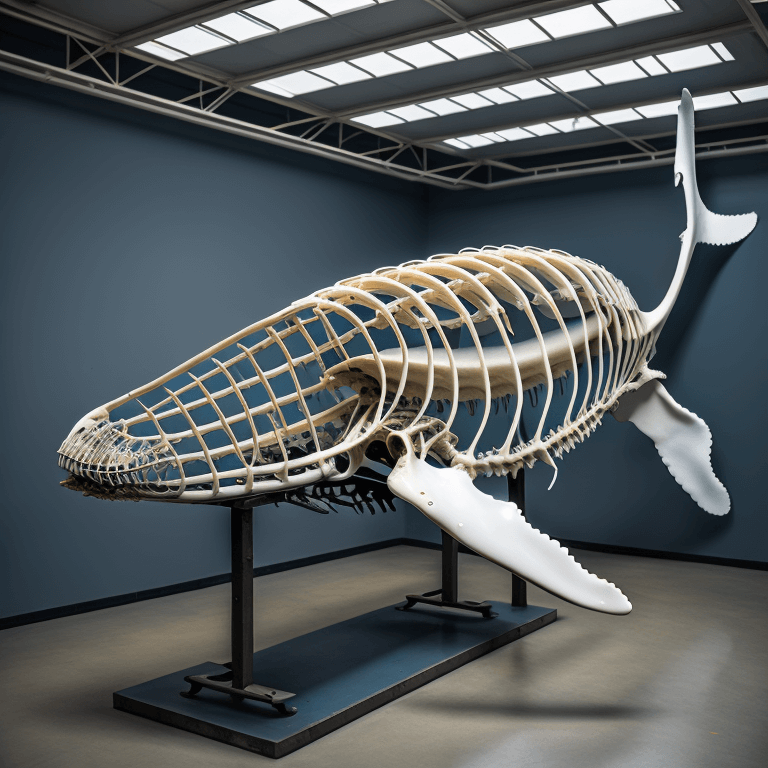
Bone is denser than cartilage and forms the whale’s skull, ribs, spine, and other bones.
Together these materials provide strength and flexibility to support the whale’s large body.
Here are some key facts about whale skeletons:
- Whales are mammals, so their basic skeleton structure is similar to land mammals – skull, spine, ribs, front arms/fins, and rear legs/tail.
- Whale skulls are large and contain big brains. They have long snouts with lots of teeth for filter feeding or catching prey.
- Whales have a spinal column with 7 neck vertebrae. Their vertebrae are mostly flat discs enabling flexibility.
- Ribcages are large but ribs are fairly short to allow lung expansion when deep diving.
- Front limb bones like the humerus, radius, and fingers evolved into flippers. Vestigial remnants of the hind legs are buried deep in the body.
- The pelvic girdle evolved into stern-like bones that anchor tail muscles. This powers their swimming.
- Blue whales have massive, human-sized bones as the largest animals ever. Smaller whales have proportionate skeletons.
- Whale bones contain oil and marrow, giving them high buoyancy to counteract body weight. This helped evolve from land back to water.
- Modern whale skeletons retain similarities to ancestral land mammals but are adapted for aquatic life hunting fish or krill. Their streamlined, flexible bones enable fast, deep diving.
They can be as long as 6 feet and weigh up to 350 pounds each.
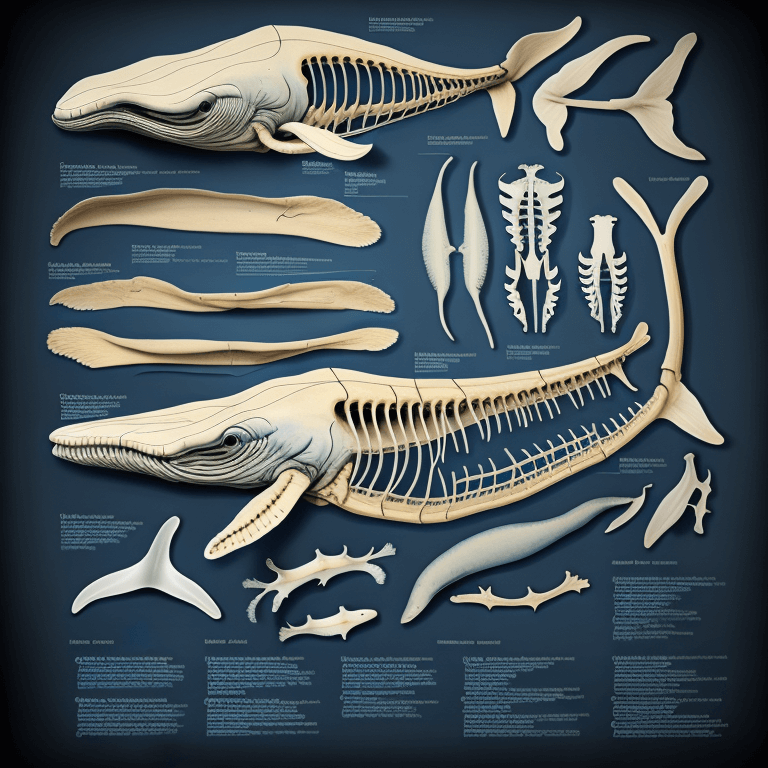
Whale vertebrae are also quite large, some measuring more than a foot in diameter.
What is the skeleton of a whale?
The whale skeleton is composed mostly of lightweight cartilage, rather than bone.
Explain It To A Child
The whale skeleton is made of cartilage and bone. Cartilage is a tough, elastic material that makes up most of the whale’s body, including the fins, flippers, and tail.
This helps the whale to stay buoyant in the water. The rib cage is also expanded and flattened, which provides more surface area for the attachment of muscles.
In addition, the whale’s pelvis is small and does not connect to the spine. This allows for a greater range of motion in the tail, which is essential for swimming.
Finally, the whale skeleton has a series of air pockets, which help to insulate the animal and keep it warm in cold waters.
All of these features make the whale skeleton uniquely suited to its aquatic environment.
What are the different parts of the whale skeleton?
The whale skeleton is an interesting and complex structure.
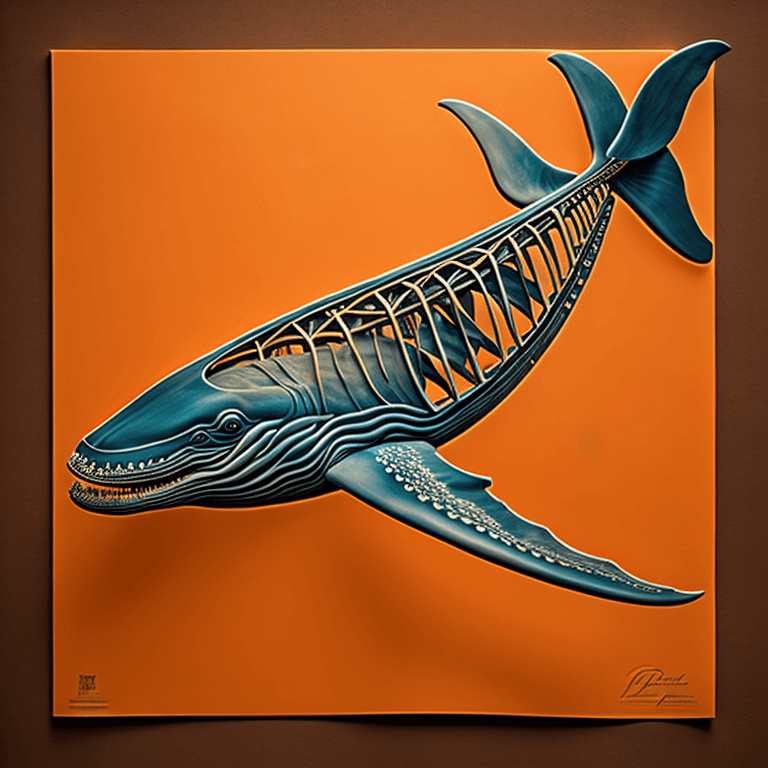
The bones are arranged in a way that allows the whale to move through the water with grace and power.
The skeleton is also quite strong, able to support the enormous weight of the whale’s body.
The main parts of a whale skeleton include the following:
- The skull, which houses the brain and provides attachment points for muscles.
- The vertebral column, which runs from the head to the tail and supports the body.
- The ribs, protect the lungs and other internal organs.
- The flippers, which are used for swimming.
- The tail, which propels the whale through the water.
Each of these parts plays an important role in allowing whales to live and thrive in their aquatic environment.
What is the largest bone in a whale’s body?
The blue whale is the largest living creature on earth, and its massive size is due in part to its large bones.

In fact, the largest bone in a whale’s body is its lower jawbone, which can weigh up to two tons.
The second largest bone is the shoulder girdle, which helps to support the whale’s huge body.
The ribs are also quite large, and they are connected to the shoulder girdle by a series of muscles and ligaments.
Together, these bones give the blue whale the necessary support to swim through the ocean depths.
Do whales have a bony skeletons?
Most baleen whales, such as blue whales and humpback whales, have a bony skeleton.
- In contrast, most toothed whales, such as sperm whales and killer whales, do not have bony skeletons.
- Instead, these whales have a flexible tissue called “blubber” that helps to insulate their bodies and provides them with buoyancy.
- As a result, baleen and toothed whales differ in both their appearance and their physiology.
Why do whales have finger bones?
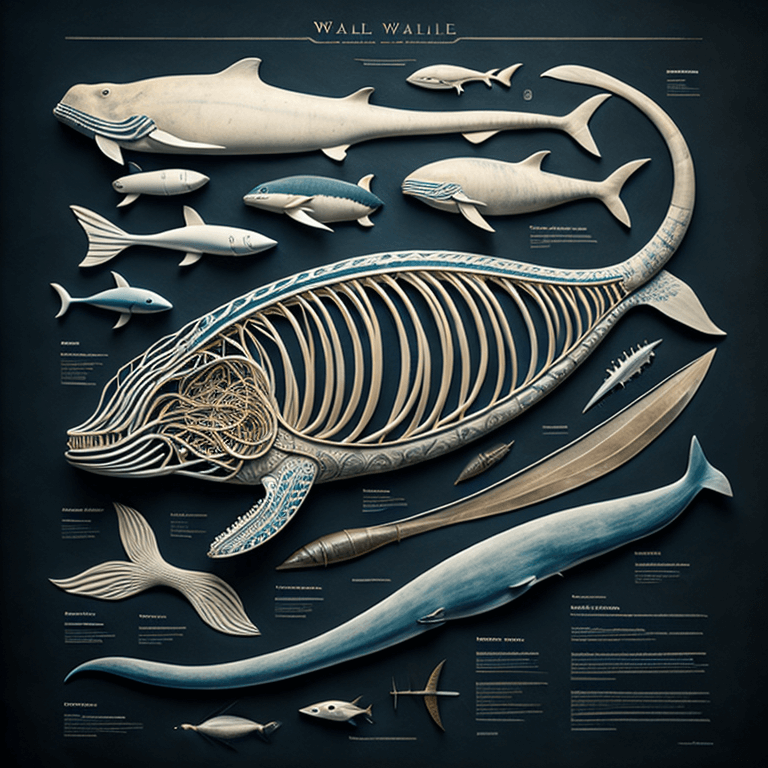
One of the most intriguing aspects of whale anatomy is the presence of finger bones.
While these bones are greatly reduced in size, they are clearly visible in some whale species.
So why do these giant marine mammals have finger bones?
One theory is that finger bones were once used for locomotion on land.
This would explain why they are found in both whales and their evolutionary ancestors, the mesonychids.
However, fossil evidence suggests that finger bones only first appeared in whales after they had already transitioned to an aquatic lifestyle.
Therefore, it is unlikely that finger bones served any purpose in locomotion.
It is more probable that finger bones functioned as support structures for flippers.
This would explain why finger bones are found in the flippers of some whale species but not others.
In addition, this theory is supported by the fact that finger bones are usually much shorter and thinner than other types of bones in a whale’s body.
While the exact function of finger bones remains a mystery, they provide a fascinating glimpse into the evolution of these amazing creatures.
How many bones are in a whale’s body?
A whale’s skeleton is composed of around 300 bones, which is fewer than the number of bones in a human skeleton.
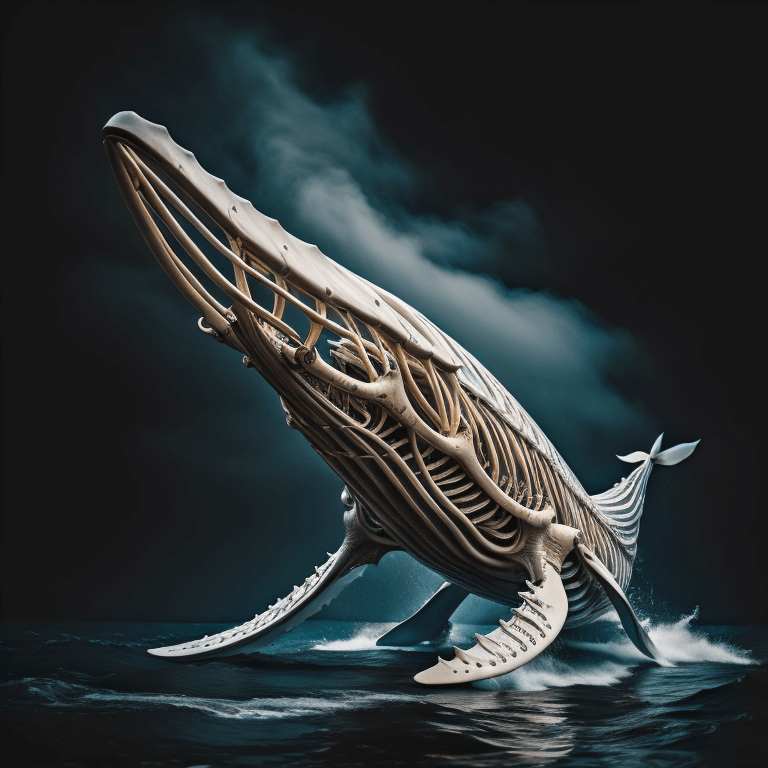
However, whale bones are generally much larger than human bones.
- For example, the femur (thigh bone) of a blue whale can weigh up to 700 kg (1,540 lb). The majority of whale bones are located in the head and trunk, with the tail containing only a few vertebrae.
- In addition, some whale species have small numbers of ribs and no sternum (breastbone).
- The pectoral fins (flippers) also contain a large number of bones, including the humerus, radius, and ulna.
- Whales are mammals, so they share some common features with other mammals, such as hair and milk-producing mammary glands.
- However, their bodies are adapted for life in water and they do not have hind limbs. Therefore, they are not able to walk on land.
Is the whale skeleton in the Natural History Museum real?
The whale skeleton on display in the Natural History Museum is one of the most popular exhibits.
And for good reason – it’s an impressive sight, looming overhead with its powerful jaw and long teeth.
But is it real? The answer is a bit complicated. The skeleton is indeed real, but it’s not from a whale that died recently.
In fact, it’s estimated to be around 300 years old.
The story goes that the whale was killed by a group of whalers off the coast of Greenland.
When they brought the carcass back to shore, they had no way to preserve it, so they simply left it to rot.
But as time went on, people began to see the skeleton as a valuable scientific specimen.
In the early 1800s, a team of scientists disassembled the bones and shipped them to London, where they were put on display in the Natural History Museum.
Today, the whale skeleton is one of the most iconic items in the museum’s collection – and a reminder of the fascinating history that lies behind it.
Thus, a whale’s skeleton is quite different from that of a human.
Despite their massive size, whale skeletons are actually quite delicate.
Article Sources
Jacks of Science sources the most authoritative, trustworthy, and highly recognized institutions for our article research. Learn more about our Editorial Teams process and diligence in verifying the accuracy of every article we publish.
